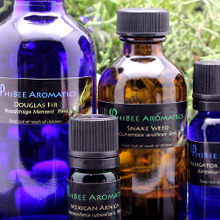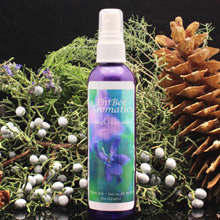SUBALPINE FIR (Abies lasiocarpa var lasiocarpa) Essential Oil
Subalpine Fir: Abies lasiocarpa var lasiocarpa
By Clare Licher
 A perfect specimen of Subalpine Fir |
Dr Robert Adams, a botanist from Texas A&M, did a comparative study on the essential oils of Subalpine fir from Arizona to the Northwest. His results revealed many differences in the essential oil profiles, which reflect the environments that the trees are growing in. The essential oil from trees on the Olympic Peninsula (where it rains or mists almost every day of the year) contains about 53% b-phellandrene, a potent anti-fungal. This is no doubt a protection against mold since the trees are in constant moisture. The oil from trees in northern Arizona, where the climate is much more arid, contains only about 5% b-phellandrene. Similarly, the trees on the Olympic Peninsula, which are not exposed to long stretches of intense sunlight and heat, contain only .1% camphene in their essential oil. The essential oil from trees in northern Arizona contains around15% camphene, which is most likely a response to a greater need for antioxidant protection. Our specimen from the Kaibab Plateau contains 21% camphene. The third significant difference in their chemistry is in the level of bornyl acetate. The trees from the Olympic Peninsula contain only .1%, where as the trees in northern Arizona contain around 30%. Bornyl acetate has anti-inflammatory, analgesic and sedating effects. The more elevated presence of this constituent may be because the trees are more drought and heat stressed from being at the southern most edge of their range.
 Subalpine Fir range |
Purchase Subalpine Fir Essential Oil
Purchase Subalpine Fir Hydrosol
 Spruce and Fir meadow |
References
Daniel E Moerman, (2009), Native American Medicinal Plants, an Ethnobotanical Dictionary
Robert P. Adams, Christopher J. Earle, David Thornburg, Phytolagia (April 2011, 93 (1)) Taxonomy of Infraspecific Taxa of Abies lasiocarpa. Leaf Essential Oils and DNA Of Abies lasiocarpa var. bifolia and var. arizonica.
Range map image: Srs.fs.usda.gov
Robert r. Alexander, Raymond C. Spearer, and Wayne D. Shepperd


